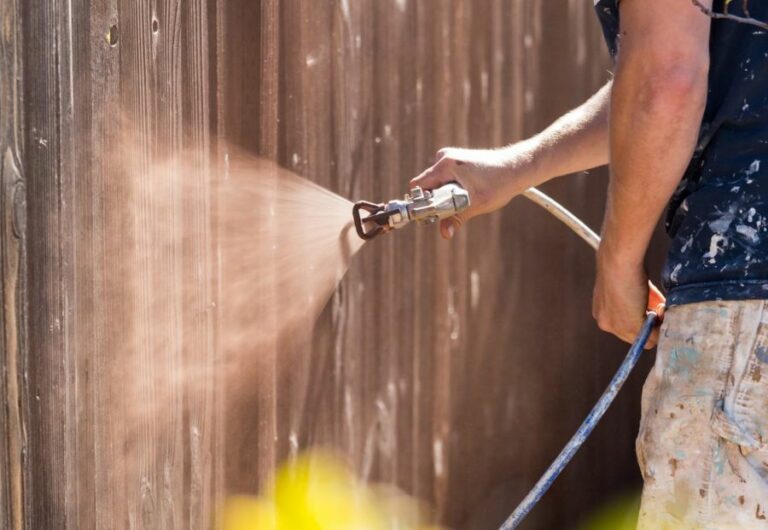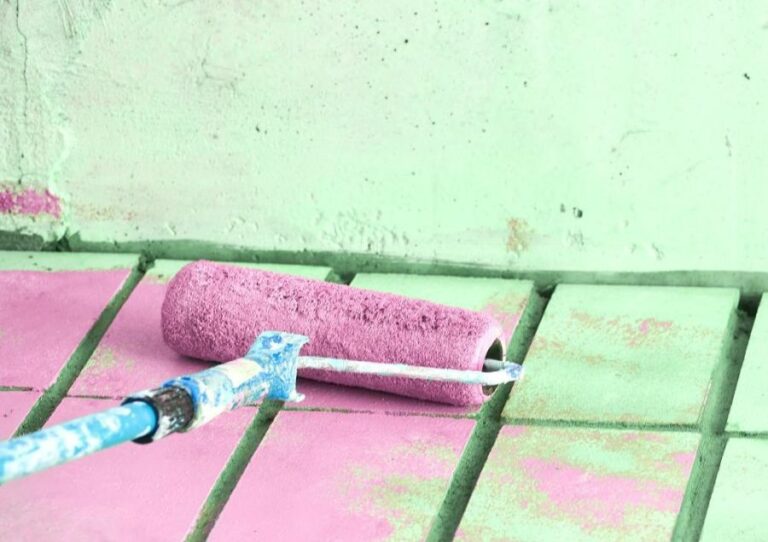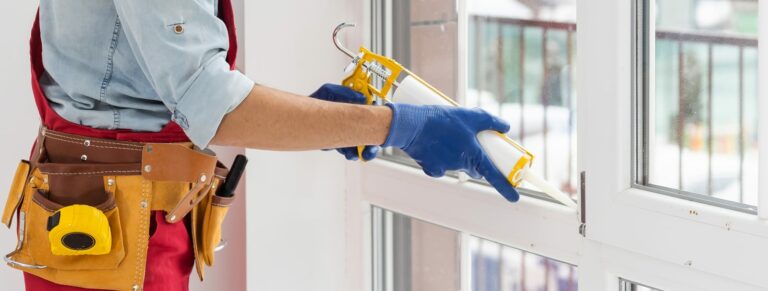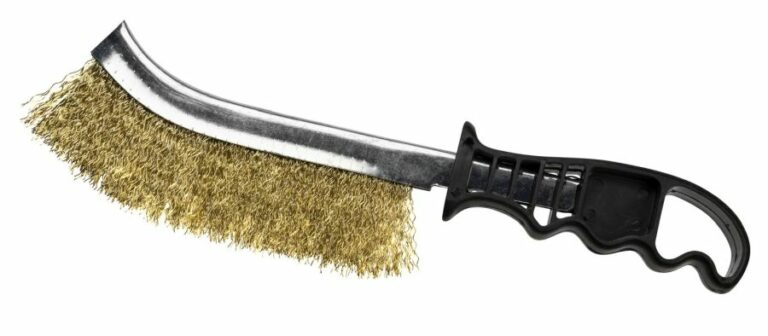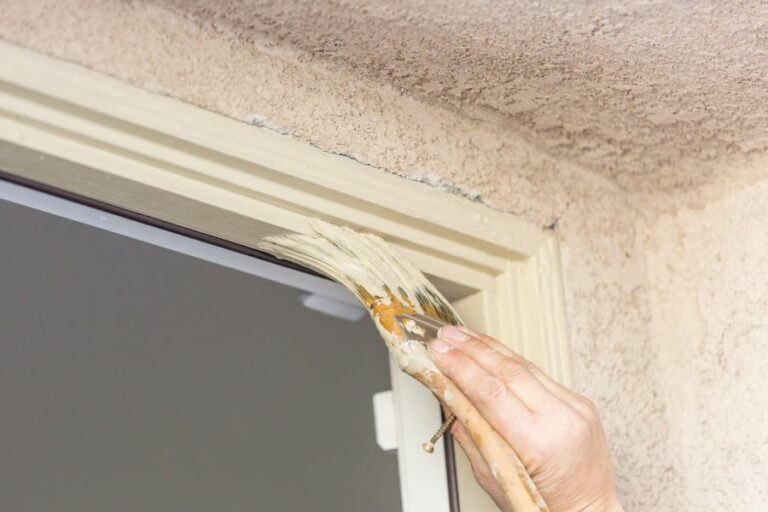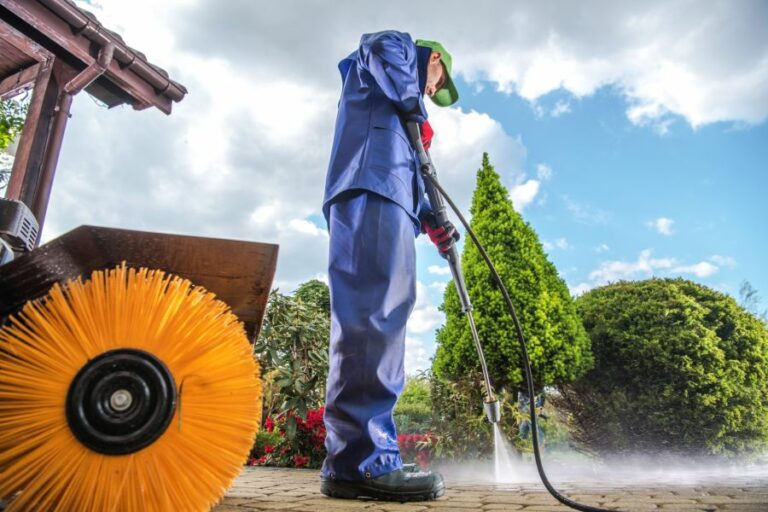Removing Loose Paint And Rust From Surfaces
Are you tired of looking at unsightly loose paint and rust on surfaces around your home or workplace? Fret not. We have the perfect solutions for you! This discussion will explore effective methods and tools for removing loose paint and rust from different surfaces.
Removing loose paint and rust from surfaces:
To effectively remove loose paint and rust from surfaces, it is crucial to prepare the surface, identify affected areas, and use appropriate tools and materials. Scrapers, wire brushes, and sanding tools can be employed for efficient removal. Surface cleaning and applying primer or rust converters ensure proper adhesion of paint and a quality finish.

Tired of unsightly paint and rust destroying your surfaces? We’ve got you covered! Keep reading for expert tips and techniques on how to remove loose paint and rust from various surfaces effectively. Bring life back to your home and furniture with our easy-to-follow guide!
Contents
- 1 Eliminating Rust and Loose Paint from Surfaces
- 2 Methods for Rust and Paint Removal
- 3 Optimal Techniques for Rust Removal on Surfaces
- 4 Eradicating Aged Paint and Rust from Metal Surfaces
- 5 Vinegar: A Solution for Rust and Paint Removal?
Eliminating Rust and Loose Paint from Surfaces
• Understanding the Importance of Surface Preparation
Before starting any painting or maintenance project, removing loose paint and rust from surfaces is crucial to ensure proper paint adhesion and quality finish. In the long term, this also helps prevent rust and paint peeling reappearance.
Surface preparation significantly impacts the durability and appearance of the final product.
• Identifying Loose Paint and Rust
– Loose Paint
Loose or peeling paint can become a severe issue if not dealt with appropriately. Some indicators of loose paint include:
- Bubbling or blistering
- Cracking or alligatoring
- Chipping or flaking
– Rust
Rust is a common issue on metal surfaces, especially those exposed to moisture or humidity. Signs of rust include:
- Brown or orange discoloration
- Pitting or rough surface
- Metal surface becoming brittle or flaky
• Selecting the Right Tools and Materials
Choosing the right tools and materials for removing loose paint and rust is essential to achieve a satisfactory outcome. Here are some recommendations for various tools and materials that can be used for surface preparation:
– Tools
- Scrapers and Putty Knives: Ideal for scraping off loose paint and rust from flat surfaces.
- Wire Brushes: Useful for removing rust from metal surfaces with minor corrosion.
- Sanding Tools: Electric sanders, sandpaper, or sanding sponges can be used to smooth rough surfaces.
- Power Tools: Grinders, drills, and rotary tools with wire brush attachments or abrasive wheels are suitable for removing stubborn paint and rust.
- Pressure Washers: An effective tool for cleaning and removing loose paint from larger surfaces like walls and decks.
– Materials
- Emery Cloth: A type of abrasive cloth used for smoothing and polishing metal surfaces.
- Rust Converter: A chemical solution that neutralizes rust and creates a paintable surface.
- Primer: A base coat that is applied before the final paint to improve adhesion and durability.
• Steps for Removing Loose Paint and Rust
Follow these step-by-step guidelines to ensure thorough and efficient removal of loose paint and rust:
1. Safety Precautions
Wear protective gear such as gloves, goggles, and a dust mask to protect yourself from dust and debris during the cleaning process.
2. Scraping
Use a scraper or a putty knife to remove peeling paint or rust from the surface. Hold the scraper at a 30-degree angle and apply gentle pressure to avoid damaging the surface. For large areas or stubborn paint, consider using power tools to expedite the process.
3. Wire Brushing
Use a wire brush to remove rust from metal surfaces. Be sure to brush in the direction of the grain or pattern of the metal to avoid scratching the surface.
4. Sanding
Smooth out the surface by sanding it with sandpaper or a sanding sponge. Start with coarse-grit sandpaper and gradually move to finer grits for a smooth finish. For large or uneven surfaces, consider using an electric sander.
5. Cleaning
Before applying a rust converter or primer, ensure the surface is clean and dry. Use a pressure washer or a damp cloth to remove dust and debris. Allow the surface to dry completely before proceeding to the next step.
Methods for Rust and Paint Removal
• Introduction
Removing rust and paint can be a challenging task, but with the right tools and methods, it can be done easily and effectively.
• Rust Removal
– Mechanical Methods
Sandpaper and Steel Wool
For small rust spots, sandpaper or steel wool can be an effective tool. To remove rust using these materials, simply rub the affected area until the rust flakes off. This method is ideal for surfaces that can withstand the abrasiveness of sandpaper or steel wool without being damaged.
Wire Brush
A wire brush can be used on larger rust spots or heavily-rusted objects. Just like sandpaper and steel wool, the wire brush can be used to scrub off rust. Make sure to wear gloves, as the bristles may cause injury.
Power Tools
For heavily-rusted objects, consider using a power tool such as an angle grinder or drill with a wire brush attachment. These tools can effectively remove rust from surfaces that may be too large or difficult to manage with hand tools. Remember to wear appropriate safety gear, such as goggles and gloves.
– Chemical Methods
Vinegar
Vinegar is a natural and cost-effective way to remove rust, as its acetic acid content helps dissolve rust. To use vinegar, simply submerge the rusted object in vinegar and let it soak for a few hours or overnight.
Lemon Juice and Salt
Lemon juice and salt can also be used as a natural rust remover. Mix lemon juice with salt to create a paste, apply it to the rusted area, and let it sit for a couple of hours. Afterward, scrub the mixture off the surface with a toothbrush or soft cloth.
Commercial Rust Removers
A variety of commercial rust removers are available on the market. These products typically contain chemicals like phosphoric or hydrochloric acid to break down rust. Make sure to follow the manufacturer’s instructions and take appropriate safety precautions when using these products.
I recommend using a commercial rust remover like Evapo-Rust for heavily-rusted objects, as it is non-toxic and biodegradable.
• Paint Removal
– Mechanical Methods
Sandpaper
Sandpaper can be used to remove paint from small surfaces or for fine-tuning the removal process. Start with a lower grit sandpaper, such as 80-grit, and work your way up to a higher grit for a smoother finish. Be mindful not to sand too deeply, as it may damage the surface beneath the paint.
Paint Scraper or Putty Knife
A paint scraper or putty knife works best for removing loose, flaking paint. Simply slide the tool under the paint and apply gentle pressure to lift it away from the surface. There are specialized paint scraper blades that can be attached to power tools for more efficient paint removal.
Heat Gun
A heat gun can be used to soften the paint, making it much easier to remove with a scraper or putty knife.
Hold the heat gun a few inches away from the painted surface and slowly move it back and forth, being careful not to burn the surface. As soon as the paint begins to bubble or soften, start scraping it away with your chosen tool.
– Chemical Methods
Paint Strippers
Paint strippers, both in liquid and gel forms, are available for removing paint. These are specially formulated chemicals that break down the paint, making it easier to scrape off.
Some paint strippers are designed for use on specific surfaces, such as wood or metal, so be sure to choose the appropriate product for your project.
I recommend using a soy-based or biodegradable paint stripper for a safer and environmentally-friendly option.
Soda Blasting
Soda blasting is an environmentally friendly method of paint removal that uses sodium bicarbonate (baking soda) blasted at high pressure to strip paint from surfaces.
This method is especially suitable for delicate surfaces or antiques; however, it usually requires hiring a professional with specialized equipment.
• Conclusion
There are multiple methods for removing rust and paint. When selecting a method, it is crucial to consider the surface material and the severity of the rust or paint damage. For small jobs, sandpaper or steel wool may suffice, while larger jobs might require power tools or chemical rust removers.
Similarly, paint removal can be accomplished with hand tools, heat guns, or chemical strippers.
Remember, always prioritize safety by wearing appropriate protective gear and following manufacturer instructions when using chemicals or power tools. And if in doubt, consider consulting with or hiring a professional to ensure the best results.
Optimal Techniques for Rust Removal on Surfaces
Rust, also known as iron oxide, is a common issue that can affect various metal surfaces. It occurs when iron or its alloys (like steel) are exposed to moisture and oxygen over time. Rust can potentially weaken the metal, causing it to break or collapse.
Additionally, it can lead to an unsightly appearance on the affected surface.
• Mechanical Methods of Rust Removal
– Sanding
One of the most straightforward ways to remove rust is by sanding it away with sandpaper or a sanding sponge. This method works best for small, localized rust spots on surfaces that are easy to reach.
You can also use a power sander or an angle grinder fitted with a sanding disc for larger and harder-to-reach areas.
Sanding can be a labor-intensive and time-consuming process, but it is quite effective if done diligently. Make sure to wear safety goggles and gloves to protect yourself from dust and debris while sanding.
– Wire Brush
Another manual method for rust removal is using a wire brush. This can either be a hand-held wire brush or a power tool attachment for a drill or angle grinder. Wire brushes can effectively loosen and remove rust from metal surfaces.
If using a power tool, ensure you wear safety goggles and gloves, as the process can produce flying debris. Make sure to work slowly to avoid scratching the underlying metal, which can lead to more rust formation later on.
– Sandblasting
If you’re dealing with a large area of rust or a heavily corroded surface, sandblasting could be the most effective option. Sandblasting involves using highly pressurized air to shoot abrasive material (such as sand or glass beads) at the rusted surface, removing the rust as a result.
However, sandblasting is best performed by professionals, as there is potential for damage to the surface or injury if not done properly. It also requires specialized equipment, which can be rented or purchased.
• Chemical Methods of Rust Removal
– Vinegar
A more easily accessible method of rust removal can be found right in your kitchen. White vinegar contains acetic acid, which can dissolve rust. Submerge the rusted object in vinegar, making sure it is completely covered.
Allow it to soak for several hours or overnight, depending on the severity of the rust. Afterward, use a brush or cloth to scrub away the loosened rust.
For larger surfaces or items that cannot be submerged, you can apply vinegar to a cloth or sponge and rub it directly onto the rusted area.
– Baking Soda
Alternatively, you can make a paste with water and baking soda, applying it directly to the rusted surface. Allow the paste to sit for a few hours before scrubbing it away with a brush, then rinsing it with water. Baking soda does not have the same acidic properties as vinegar, making it a gentler alternative.
– Commercial Rust Removers
There are also many commercial rust remover products available on the market. These products contain chemicals specifically designed to dissolve rust, making them highly effective.
However, it is essential to follow the manufacturer’s instructions and take necessary safety precautions when using these products, as they can be harmful if not handled correctly.
Before applying a commercial rust remover, make sure to clean the surface with soap and water, and remove any loose rust with a wire brush or sandpaper.
• Electrolysis for Rust Removal
Electrolysis is an effective and environmentally friendly method for removing rust. It involves passing an electric current through a solution (like a mixture of water and washing soda) where the rusted object is submerged. The rust reacts to the electric current, causing it to detach from the metal surface.
To perform electrolysis for rust removal, you will need a car battery charger, a piece of iron or steel to act as a sacrificial electrode, a washing soda, and a container large enough to hold the rusted object and the solution.
Ensure you follow proper safety procedures when working with electricity and wear protective gloves and goggles.
• Prevention is Key
After removing the rust from a surface, it is important to take steps to prevent it from reoccurring. Applying a coat of rust-inhibiting primer or paint and periodically checking for moisture or damage can help prevent rust from re-forming on metal surfaces.
In conclusion, there are various methods to remove rust from surfaces, each with its advantages and drawbacks. The best way to remove rust will depend on the size and location of the rust, as well as the tools and materials available.
Remember to prioritize safety when attempting to remove rust, and consult a professional if you are unsure of the best course of action.
Method | Supplies Needed | Instructions |
|---|---|---|
White Vinegar | White vinegar, cloth or sponge, water, and a dry towel | – Soak a cloth or sponge in white vinegar. – Wipe the rusted surface with a cloth or sponge. – Let the vinegar sit on the surface for 15-30 minutes. – Scrub the surface with a cloth or sponge to remove rust. – Rinse away vinegar with water and dry the surface with a towel. |
Baking Soda and Water | Baking soda, water, scrub brush, cloth or sponge, and a dry towel | – Mix baking soda and water to create a thick paste. – Apply the paste to the rusted surface. – Allow the paste to sit on the surface for 1-2 hours. – Scrub the surface with a scrub brush, cloth, or sponge to remove rust. – Rinse away paste with water and dry the surface with a towel. |
Steel Wool or Wire Brush | Steel wool or wire brush, cloth or sponge, water, and a dry towel | – Using the steel wool or wire brush, scrub the rusted surface in a circular motion. – Apply pressure as needed to remove rust. – Wipe away rust debris with a cloth or sponge. – Rinse the surface with water and dry it with a towel. |
Sandpaper | Sandpaper (medium-grit to fine-grit), cloth or sponge, water, and a dry towel | – Sand the rusted surface using medium-grit sandpaper. – Continue sanding, progressing to finer grits as rust is removed. – Wipe away rust debris with a cloth or sponge. – Rinse the surface with water and dry it with a towel. |
Eradicating Aged Paint and Rust from Metal Surfaces
Are you trying to restore a piece of metal that has been subjected to time’s corrosive grasp? Look no further!
• Safety First
Before diving into the different techniques, it is crucial to prioritize safety. Old paint can contain lead and rust particles, which may be harmful if inhaled or ingested. Always wear protective gear, such as gloves, safety goggles, and a high-quality respiratory mask, when working with paint and rust.
In addition, work in a well-ventilated area to minimize the risk of inhaling fumes from chemical products. If possible, work outdoors or in a space with an exhaust fan to ensure proper ventilation.
• Mechanical Methods for Rust and Paint Removal
– Sanding
One of the most common ways to remove paint and rust from metal is through sanding. This process requires manual labor, as you scrub the surface with sandpaper, steel wool, or abrasive pads.
Start with coarser grit sandpaper (60-80 grit) to remove large patches of rust and paint. Then, use finer grit sandpaper (120-220 grit) to smooth out the surface and eliminate remaining traces. After sanding, wipe the metal clean with a damp cloth to remove any debris.
– Wire Brush
Another effective method for removing rust is using a wire brush. This tool features stiff bristles made of metal, perfect for scouring away rust deposits.
Use moderate pressure to scrub the rusted surface until the bare metal is revealed. Just like with sanding, be sure to clean off any debris with a damp cloth afterward.
– Power Tools
If manual labor proves too taxing or time-consuming, consider using power tools. Angle grinders, wire wheel attachments for drills, and sanding discs can significantly speed up the rust and paint removal process.
Always exercise caution when utilizing power tools and follow the manufacturer’s instructions to avoid injury.
• Chemical Methods for Rust and Paint Removal
– Paint Removers
When dealing with stubborn paint or larger surfaces, paint-removing chemicals can be a more efficient option. These products, often in gel or liquid form, work by breaking down the paint’s bond to the metal surface.
To use a paint remover, follow the manufacturer’s instructions for application, wait time, and removal method. Most paint removers require 15-30 minutes of dwell time, followed by scraping off the loosened paint. Always be sure to use proper protective gear and ventilation when working with chemicals.
– Rust Converters
Another chemical solution for tackling rust is rust converters. These products not only remove rust but also create a protective layer that prevents future rust formation. Rust converters contain phosphoric or tannic acids, which convert rust into an inert, black substance called iron tannate.
Follow the manufacturer’s instructions for application, which usually involve brushing or spraying the solution directly onto the rusted area, waiting for the rust to convert, and then rinse off any residue. Make sure to use proper protective gear and ventilation, as is the case with all chemical applications.
Naval jelly is a phosphoric acid-based gel specifically designed to remove rust from metal surfaces. Apply the gel directly to the rusted surface, following the manufacturer’s instructions for dwell time, which can vary from 5-30 minutes.
Afterward, use a damp cloth or brush to rinse off the treated area, revealing a rust-free metal surface.
• Electrolysis: A Powerful Rust-Removal Technique
Electrolysis is an effective rust-removal method that involves the use of direct electrical current to break down rust on a metal surface. This technique requires a container filled with an electrolyte solution, a battery charger or DC power supply, and a sacrificial metal piece.
First, fill the container large enough to fit your rusted item with a solution of water and washing soda. Next, connect the positive (red) battery charger cable to the sacrificial metal piece and the negative (black) cable to the rusted item.
Submerge both the rusted object and the sacrificial metal in the solution, ensuring they do not touch. Finally, turn on the battery charger and let the process run until the rust has been removed.
• Conclusion
By combining mechanical, chemical, and even electrolytic methods, you can successfully remove old paint and rust from metal surfaces. Remember to protect yourself and your work area with appropriate gear and ventilation.
With these techniques at your disposal, restoring metal items to their former glory is entirely achievable!
Step | Description |
|---|---|
1 | Use a wire brush or a paint scraper to scrape off as much of the old paint and rust as possible. |
2 | If necessary, use a power tool (such as an angle grinder or a sanding disk) to remove any stubborn or hard-to-reach areas. |
3 | Apply a chemical paint stripper to the remaining paint and rust, and let it sit for the recommended amount of time. |
4 | Scrape away the softened paint and rust using a plastic scraper or a wire brush. |
5 | Once the paint and rust are removed, use fine-grit sandpaper to smooth any rough edges or surfaces. |
6 | Apply a rust converter primer to the entire metal surface, which will help prevent future rust from forming. |
7 | Paint the metal surface with your desired paint, following the manufacturer’s instructions for application and drying time. |
Vinegar: A Solution for Rust and Paint Removal?
• The Power of Vinegar
Vinegar, a common household item, is known for its versatility in day-to-day life. From cooking to cleaning, vinegar has a variety of uses. One such use is its ability to remove rust and paint. Vinegar’s acidic properties make it an effective, inexpensive, and environmentally friendly solution for such tasks.
• Understanding the Chemistry Behind Vinegar
Vinegar is a dilute solution of acetic acid (CH3COOH), typically containing around 5% acetic acid by volume. The acetic acid reacts with metal oxides, such as rust, and helps in dissolving them. This same acid also breaks down the chemical bonds in paints, making it easier to remove them from surfaces.
It is important to note, however, that the effectiveness of vinegar as a rust and paint remover will depend on factors such as the type of vinegar used, the concentration of acetic acid, and the duration of exposure.
• Vinegar as a Rust Remover
Rust is the result of a chemical process called oxidation, where metal reacts with oxygen in the presence of moisture. The formation of rust can weaken the metallic structure, affecting its functionality and appearance. Removing rust is essential to prolong the life of metal surfaces and objects.
To remove rust using vinegar, follow these steps:
- Cleaning the surface: Wipe down the rusted area with a cloth or sponge to remove any dirt or dust.
- Submerging the object: If the rusted object is small enough, submerge it in a container filled with vinegar. For larger objects, apply vinegar to the rusted areas using a cloth or spray bottle.
- Soaking the object: Allow the rusted object to soak in vinegar for a few hours, or even overnight if the rust is particularly stubborn.
- Scrubbing away the rust: After soaking, use a scrubbing pad or steel wool to remove the rust. You will notice that the rust will come off more easily due to the vinegar’s action.
- Rinse and dry: After removing the rust, rinse the object with water to remove any remaining vinegar, and then dry thoroughly to prevent further rusting.
Here is an informative resource from National Park Service that discusses various methods of removing rust, including the use of vinegar.
• Vinegar as a Paint Remover
Paint removal can be a challenging task, especially when working with stubborn paint or delicate surfaces. Using vinegar can be a safe alternative to harsh chemical paint removers.
Here are the steps to remove paint using vinegar:
- Heat the vinegar: Warm white vinegar in a saucepan, ensuring it does not reach boiling point. Hot vinegar is more effective in breaking down the paint than cold vinegar.
- Apply the vinegar to the painted surface: Using a brush or cloth, apply the warm vinegar to the paint you want to remove. Be careful while handling the hot vinegar to prevent burns.
- Allow the vinegar to work: Let the vinegar soak into the paint for a few minutes, allowing it to break down the paint’s bond with the surface.
- Scrape off the paint: Gently use a scraper or stiff brush to remove the paint, being careful not to damage the underlying surface.
- Repeat if necessary: If some paint remains, repeat the process until the desired results are achieved.
It is important to note that vinegar may be more effective on water-based paints, while oil-based paints may require more aggressive solvents or mechanical methods for removal.
• Tips and Precautions
- For rust removal, try using distilled white vinegar, which generally has a higher acetic acid content and tends to be more effective.
- When using vinegar to remove paint from wood, test the vinegar on an inconspicuous area first to ensure it does not damage the wood’s finish.
- Use protective gloves and eyewear when working with vinegar, as it can cause skin and eye irritation.
- Never mix vinegar with bleach or other household chemicals, as this can produce toxic fumes.
- Dispose of used vinegar and paint residue according to local regulations and guidelines.
• Final Thoughts
Vinegar, with its acidic properties, can be an effective and eco-friendly solution for removing rust and paint from various surfaces. While it may not always be the strongest or fastest solution, its low cost, availability, and safety make it a valuable tool in many rust and paint removal projects.

